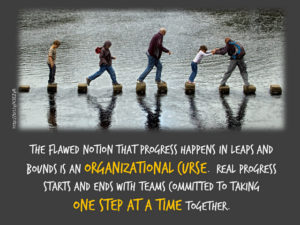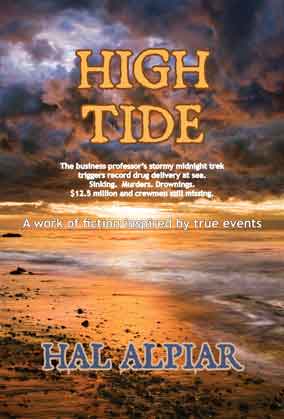Jul 14 2018
EVERY GROWING BUSINESS GROWS WEEDS
EVERY GROWING BUSINESS
GROWS WEEDS

The National Federation of Independent Business proclaims NOW is the first time in 45 years that confidence levels of US small business owners are prompting a growth and expansion attitude.
So, the time to grow is NOW.
But beware the temptation to charge full-steam ahead because pursuing more business or professional practice growth now probably means you’ll need to be pulling weeds first!
You’ll need to make more elbow room for your new or planned crops/flowers/products/services to gain more sunshine, and an increased share of watering.

And, remember that no matter how clear things appear above ground, nothing can grow when underground weed roots are commandeering the water supply, and strangling what you are trying to plant!
So, even with more sunshine, unless below-the-surface water routes are not also freed up, you will have done only half the job… ending up with half the possible results.
Well then, where do you start?
Just pulling harder on your weeds often only serves only to delay failure because the roots that remain (after the aboveground portions snap off) simply get larger and even more aggressive.
Odds are you already have a pretty good idea of where you want to end up, but before you set specific, realistic, flexible, due-dated goals in writing, step back from what you’re doing right now and assess your business’s ability to rise to the occasion.
In other words, honor the famous old quotes from Robert J. McKain: “There is no achievement without goals” and Earl Nightingale: “People with goals succeed because they know where they’re going.” And most importantly: Start with an honest appraisal of your SELF.
How capable are you and how much do you really want to spend the energy to make a difference for your SELF, your family, your employees, your customer/patient/client base?
How many people are presently employed by your business or professional practice?
Have each of them demonstrated a capability to rise to the occasion? If yours is a “family” business, how invasive is that influence on where you want to go?
Make a Yes/No/Maybe list.
Who among the “no” and “maybe” people are “weeds”? (i.e., they need to move or shift their attitudes somehow to allow more sunshine in… or they need to simply be removed by the roots because they are taking up too much space and water to continue with your new growth ambitions and directions.)
Decide how flexible/adaptable/energetic/motivated each of them is?
And what you think it will take to get each moving in the right direction.
Remember that weeds DO have a use
. . . when they are added to the mulch pile.
BusinessWORKS.US
GROWING BUSINESS & PROFESSIONAL PRACTICES NOW
Hal Alpiar & Johnny Stites Weekly Radio Show 24/7 Podcasts
Creating Record Business Growth Impact with 100 Years of Experience













